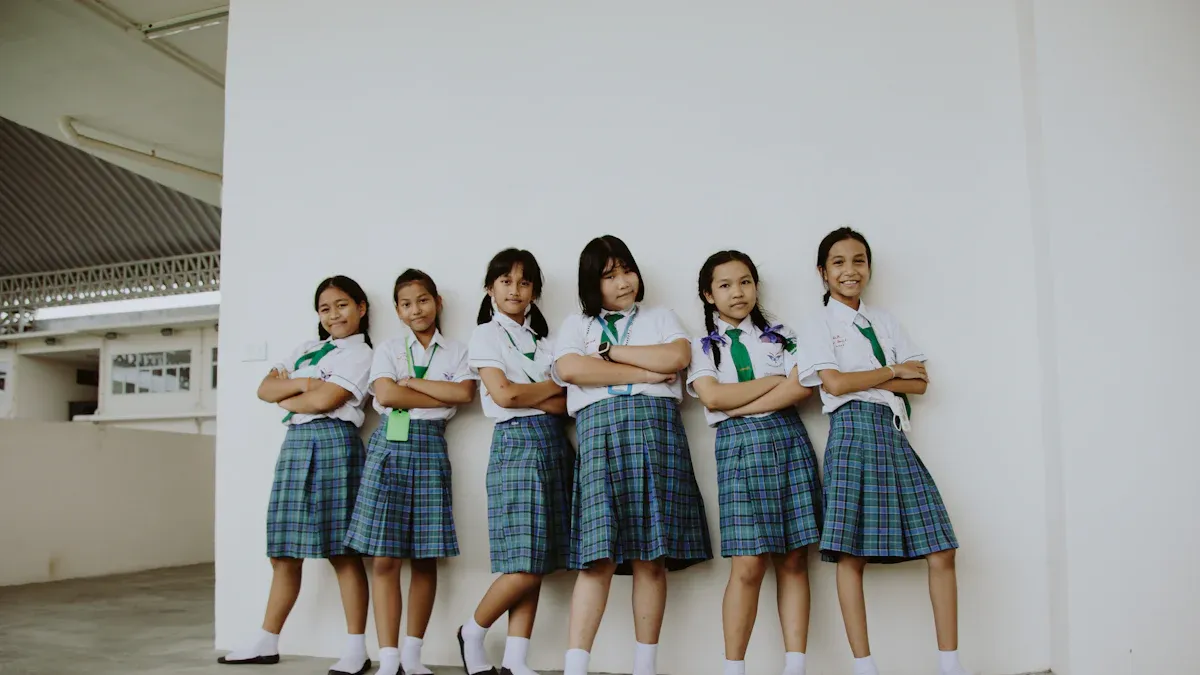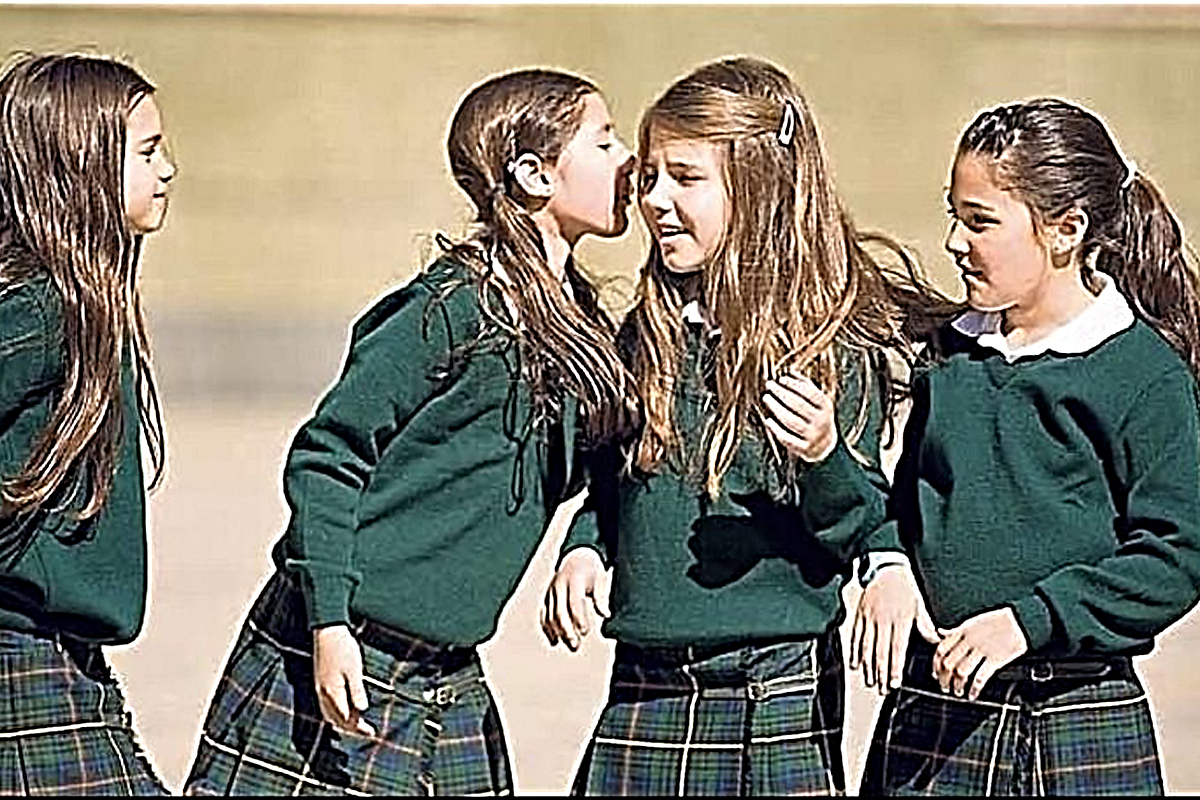
Tartan has become more than just a design; it’s a fundamental element of school uniform fabric. Plaid school uniform fabric, often made from poly rayon fabric or rayon fabric polyester blends, plays a key role in promoting identity and pride. Research indicates that school uniform check fabric with plaid patterns boosts student satisfaction by 30%, while fancy yarn dyed fabric options help nurture a sense of inclusivity and uphold tradition.
Key Takeaways
- Tartan uniforms make students 30% happier, creating pride and unity.
- Schools can design tartan patterns to show their special values.
- Eco-friendly tartan fabrics help schools respect tradition and the planet.
The Historical Roots of Tartan
Origins in Scottish Heritage
Tartan’s roots stretch deep into Scotland’s history, where it began as more than just a fabric. Archaeological discoveries reveal tartan-like patterns dating back over 3,000 years. These early examples, woven with natural dyes, highlight the intricate craftsmanship of ancient weavers. Historical records also show that the Celts, as noted by Greek historian Pliny the Elder, used colorful woolen fabrics. This suggests that tartan weaving predates recorded history, making it a cornerstone of Scottish heritage.
The distinct designs of tartan emerged from weaving threads of different colors, creating patterns that symbolized community identity. These patterns were not just decorative; they carried cultural significance, connecting people to their land and traditions.
Tartan’s origins remind us how a simple fabric can weave together history, culture, and identity.
Tartan as a Symbol of Identity
By the 16th century, tartan had evolved into a powerful symbol of identity in Highland culture. Initially, patterns varied by region, but over time, they became associated with specific clans. This shift marked a significant cultural development. By the late 18th century, tartans were officially recognized as clan symbols, solidifying their role in Scottish society.
The visit of King George IV to Scotland in 1822 further elevated tartan’s status. Encouraged by Sir Walter Scott, the king donned tartan attire, sparking a renewed interest in the fabric. This event cemented tartan as a representation of Scottish pride and unity.
Global Influence and Adaptation
Tartan’s influence has transcended Scotland, becoming a global phenomenon. Designers worldwide have embraced tartan, incorporating it into fashion collections showcased on runways from Paris to New York. Cultural festivals, like Tartan Day in Nova Scotia, celebrate its heritage, while films such as Braveheart and Outlander introduce tartan to new audiences.
The fabric’s adaptability is remarkable. It has found its way into everyday wear, music, and even school uniform fabric, blending tradition with modernity. Tartan’s journey from a regional identifier to a global fashion staple highlights its enduring appeal and versatility.
Tartan as a School Uniform Fabric
Adoption in Educational Institutions
Tartan’s journey into schools began in the mid-20th century. By the 1960s, tartan uniforms gained popularity, marking a pivotal moment in how schools approached identity. I’ve noticed that many institutions adopted tartan to create a distinct brand without relying on excessive embellishments. This simplicity allowed schools to stand out while maintaining a professional appearance.
The versatility of tartan patterns made it an ideal choice for school uniform fabric. Schools could customize designs to reflect their unique values and traditions. For example:
- Some schools chose bold, vibrant tartans to symbolize energy and creativity.
- Others opted for muted tones to convey discipline and focus.
This adaptability ensured that tartan became a staple in educational attire, blending tradition with practicality.
Building Collective Identity Through Uniforms
Tartan uniforms do more than just clothe students; they foster a sense of unity. I’ve seen how wearing the same pattern can instill pride and belonging among students. Research supports this, showing that tartan uniforms contribute to:
- A 30% increase in student satisfaction.
- A stronger collective identity within schools.
When students wear tartan, they feel connected to their peers and their institution. This shared identity helps create a supportive and inclusive environment, which is essential for learning and personal growth.
“A uniform is not just fabric; it’s a thread that ties individuals to a larger community.”
Cultural and Institutional Significance
Tartan’s cultural roots make it more than just a fashion statement. It serves as a bridge between history and modernity. With over 7,000 registered designs, tartan reflects the diversity of Scottish heritage. Schools that incorporate tartan into their uniforms honor this legacy while embracing its modern applications.
| Case Study | Description | Impact |
|---|---|---|
| Revitalization of Tartan | Clan names assigned to tartan patterns in the 19th century | Strengthened cultural identity and modern use in education |
| Tartan in Global Fashion | Designers like Alexander McQueen popularized tartan | Showcased tartan’s adaptability and relevance |
Tartan’s integration into school uniform fabric highlights its enduring significance. It connects students to a rich cultural history while preparing them for a globalized world.
Modern Tartan in Fashion and Education
Contemporary Trends in Tartan Design
Tartan has undergone a remarkable transformation in recent years, blending its historical charm with modern aesthetics. I’ve noticed how designers are reimagining tartan to cater to evolving tastes. For instance, plaid patterns are making a strong comeback, driven by a mix of nostalgia and innovation. Sustainable fashion has also embraced tartan, with brands opting for eco-friendly materials like organic cotton and recycled wool.
| Trend | Description |
|---|---|
| Resurgence of Plaid | Plaid and tartan patterns are experiencing a revival in high fashion and everyday wear, driven by nostalgia and modern innovation. |
| Sustainable Fashion | There is a growing demand for sustainable plaid products, with brands using eco-friendly materials like organic cotton and recycled wool. |
| Streetwear Integration | Bold plaid patterns are being incorporated into streetwear, appealing to younger consumers with oversized shirts and layered looks. |
| Mixing Patterns | Designers are creatively mixing different plaid patterns, adding a modern twist to traditional designs for personalized styling. |
| Home Decor Popularity | Tartan and plaid are increasingly used in home decor, enhancing rustic atmospheres with items like blankets and upholstery, particularly in farmhouse styles. |
These trends highlight tartan’s versatility, proving it can adapt to both high fashion and everyday practicality.
Innovations in School Uniform Fabric
Tartan’s role in school uniforms has evolved significantly since its introduction in the 1960s. I’ve observed how schools and manufacturers have embraced innovation to make tartan more functional and appealing. Early adopters like Bendinger Brothers and Eisenberg and O’Hara revolutionized the market by offering tartan uniforms that balanced durability with style.
| Year | Event/Significance | Description |
|---|---|---|
| 1960s | Popularity Surge | Tartan fabric became widely adopted in school uniforms, particularly in Catholic schools, marking a significant cultural shift. |
| 1960s | Market Introduction | Major suppliers like Bendinger Brothers and Eisenberg and O’Hara began offering tartan uniforms, indicating a commercial innovation in fabric usage. |
Today, advancements in fabric technology have made tartan uniforms more comfortable and sustainable. Many schools now use blends like poly rayon fabric, which combines durability with a soft texture. This ensures that school uniform fabric not only looks good but also meets the practical needs of students.
Balancing Tradition with Modernity
Tartan’s enduring appeal lies in its ability to balance tradition with modernity. I’ve seen how schools use tartan to honor their heritage while staying relevant in a fast-changing world. For example, some institutions retain classic tartan patterns to reflect their long-standing values. Others experiment with contemporary designs to appeal to younger generations.
“Tartan is more than a fabric; it’s a bridge between the past and the future.”
This balance ensures that tartan remains a timeless choice for school uniform fabric. It connects students to a rich cultural legacy while embracing the innovations of today.
Tartan has evolved from a cultural emblem into a cornerstone of school uniforms. I’ve seen how it bridges history and modernity, fostering identity and pride.
“Tartan is not just fabric; it’s a story woven into education.”
Its timeless appeal ensures schools honor tradition while embracing innovation, creating a lasting legacy.
FAQ
What makes tartan a popular choice for school uniforms?
Tartan combines tradition, identity, and practicality. Its customizable patterns allow schools to reflect their values while fostering unity among students.
Tip: Tartan’s durability and timeless appeal make it ideal for long-term use in uniforms.
How do schools customize tartan patterns for their uniforms?
Schools work with fabric designers to create unique tartan patterns. These designs often incorporate specific colors or motifs that represent the institution’s heritage and values.
Is tartan fabric sustainable for modern school uniforms?
Yes! Many manufacturers now use eco-friendly materials like recycled polyester and organic cotton to produce tartan fabrics, ensuring sustainability without compromising quality.
Post time: Mar-22-2025



